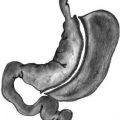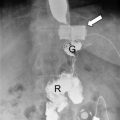Classification
Body mass index category
Underweight
<18.5
Normal weight
18.5–24.9
Overweight
25.0–29.9
Obese
>30.0
Class I
30.0–34.9
Class II
35.0–39.9
Class III
>40.0
These BMI cut points in adults are the same for men and women, regardless of their age.
For clinical and research purpose, obesity is classified into three categories: class I (30–34.9), class II (35–39.9), and class III (>40) [5]. With the growth of extreme obesity, researchers and clinicians have further divided class III into super obesity (BMI 50–59) and super-super obesity (BMI > 60).
The current used BMI cutoff values are based on morbidity and mortality studies in Caucasian population [6]. Several studies observed that some obese patients do not show expected metabolic abnormalities despite their substantial excess of body fat, demonstrating that while obesity increases the possibility of having complications, not every obese patient will develop them [7]. Although BMI is the accepted method to classify obesity and it can be used to predict and evaluate disease risk in epidemiological studies, it does not differentiate the composition of lean versus fat tissue and therefore may lead to erroneous interpretations (Kushner et al. 2009).
Moreover, obese individuals differ not only in respect to the excess fat mass but also in its regional distribution in different body sites. It is important to distinguish between android obesity and gynoid fat distribution, in which fat is allocated peripherally around the body [6].
Indeed, central or visceral abdominal obesity is associated with substantially different metabolic profiles and cardiovascular risk factors than gluteal-femoral obesity. To assess these differences, it is useful to measure waist circumference (WC) . Population studies have shown that people with larger WC have impaired health and increased cardiovascular risk compared with those with normal WC within the healthful, overweight, and class I obesity BMI categories. Abdominal fat is clinically defined as a WC of 102 cm or more in men and 88 cm or more in women (Kushner et al. 2009).
In addition to BMI and WC, there are other markers for excess body fat evaluation used for clinical practice, as the skinfold thickness and the waist-to-hip ratio [6].
Next to these descriptive classifications, the presence of obesity-related comorbidities is gaining importance as a discriminating factor, as captured by the Edmonton Obesity Staging System (EOSS) [8] and the Cardiometabolic Disease Staging (CMDS ) system [9]. The current trend is to consider two types of obesity, the so-called eumetabolic obesity (not associated with comorbidities) and dysmetabolic obesity (associated with inflammation, insulin resistance, dyslipidemia, hypertension).
Finally, direct measure of body mass fat, through magnetic resonance imaging (MRI), computed tomography (CT), dual-energy X-ray absorptiometry (DXA), bioimpedance analysis, and total body water, is gaining interest to assess the obese phenotype, but more studies are needed before either can be routinely recommended for office use.
1.3 Pathogenesis and Etiology
The etiology of obesity is multifactorial, involving a complex interaction among genetics, hormones, and the environment [10]. Body weight is regulated by a multifaceted system, including both peripheral and central factors. Ghrelin is a circulating peptide hormone, originally isolated from the stomach, but it has also been identified in other peripheral tissues, such as the gastrointestinal tract, pancreas, ovary, and adrenal cortex. It is the only known peripherally acting orexigenic hormone and is responsible for stimulating appetite [11]. Leptin, another product of adipocytes, is also a central mediator of inflammation in obesity [12]. Leptin acts as a dominant long-term signal responsible for informing the brain of adipose energy reserves. In addition to adipose tissue, leptin is also produced in small amounts in the stomach, mammary epithelium, placenta, and heart. Leptin binds to specific receptors on appetite-modulating neurons and the arcuate nucleus in the hypothalamus, giving information about the status of the body energy stores, and it inhibits appetite. Leptin-deficient mice that lack leptin receptors have been shown to be hyperphagic and obese. True leptin deficiency in humans is rare; however, obese humans are, in part, leptin resistant.
Other factors involved in the regulation of body weight are peptide YY (PYY), secreted by the L cells of the distal small bowel and colon and released after a meal, by its signals to the hypothalamus cause delayed gastric emptying, thus reducing gastric secretion [13]; cholecystokinin (CCK), produced in the gallbladder, pancreas, and stomach and concentrated in the small intestine, released in response to dietary fat, regulates gallbladder contraction, pancreatic exocrine secretion, gastric emptying, and gut motility, which acts centrally by increasing satiety and decreasing appetite; and glucagon-like peptide-1 (GLP-1), whose biological activities comprehend stimulation of glucose-dependent insulin secretion and insulin biosynthesis, inhibition of glucagon secretion and gastric emptying, and inhibition of food intake. Several other hormones, collectively indicated as adipokines, are produced by the adipocytes. The key secretory products are tumor necrosis factor-alpha (TNF-α), whose role in obesity has been linked to insulin resistance; interleukin 6 (IL-6), a pleiotropic circulating cytokine linked to inflammation, impairment of host defenses, and tissue injury; and adiponectin, an adipokine derived from plasma protein, which is insulin sensitizing, anti-inflammatory, and antiatherogenic.
Secondary pathologic causes of obesity include drugs and neuroendocrine diseases (hypothalamic, pituitary, thyroid and adrenal) (Table 1.2) that should be excluded by the endocrinologist before other treatments are commenced.
Table 1.2
Etiology of obesity
Environmental causes |
Dietary factors |
Lack of physical activity |
Lifestyle factors |
Neuroendocrine obesity |
Hypothalamic obesity Trauma Tumors Inflammation Surgery Increased intracranial pressure |
Cushing’s syndrome |
Hypothyroidism |
PCOS |
Growth hormone deficiency– Hypogonadism– insulinoma and hyperinsulinaemia– pseudohypoparathyroidism |
Drugs |
Antipsychotics |
Antidepressants |
Anticonvulsants |
Steroids |
Adrenergic antagonists |
Serotonin antagonists |
Oral hypoglycemic agents |
Genetic and congenital disorders |
Prader-Willi syndrome |
Bardet-Biedl syndrome |
Leptin deficiency |
Albright hereditary dystrophy |
Alstrom-Hallgren syndrome |
Cohen syndrome |
Carpenter syndrome |
Beckwith-Wiedemann syndrome |
Pseudohypoparathyroidism type 1a |
Pregnancy and menopause |
Eating disorders and psychological causes |
Bulimia nervosa |
Stress |
Anomalous eating habits |
Depression, lack of confidence, and self-esteem |
Social factors |
1.4 Associated Comorbidities
Obesity is associated with chronic comorbidities [14, 15], physical or psychological symptoms, and/or functional limitations, which can have a substantial, negative impact on quality of life (stages 2–4 EOSS) [16] and mortality (stages 2–4 CMDS system) [3].
The most well-established weight-related comorbidities are insulin resistance, type 2 diabetes (T2D ), and cardiovascular disease, the risks of which are proportional to BMI. Other recognized complications associated with overweight and obesity include obstructive sleep apnea, nonalcoholic fatty liver disease, osteoarthritis, polycystic ovary syndrome, and increased mortality [16, 17]. Hereafter are discussed the most frequent complications of overweight/obesity.
1.4.1 Insulin Resistance, Type 2 Diabetes, and Metabolic Syndrome
Obesity is often associated with the development of adipose tissue (AT ) inflammation. Obesity-induced inflammation is a chronic, low-grade inflammation that produces much lower levels of circulating cytokines compared to classical immunity inflammation. It particularly resembles the inflammation observed in atherosclerosis, which is one of the complications of metabolic syndrome along with insulin resistance and lipid dysregulation [18]. Thus, obesity-induced inflammation may be a different kind of inflammation, namely, one that is the result of overnutrition and stress pathways that drive abnormal metabolic homeostasis (e.g., high levels of lipid, free fatty acids (FFA), glucose, or ROS). There is increasing evidence showing that inflammation is an important pathogenic mediator of the development of obesity-induced insulin resistance [19]. Adipose tissue (AT) contains immune cells, and obesity increases their numbers and activation levels, particularly in AT macrophages (ATMs ) . Other pro-inflammatory cells found in AT include neutrophils, Th1 CD4 T cells, CD8 T cells, B cells, dendritic cells (DCs), and mast cells.
AT in obesity acts as an endocrine organ that regulates the production of various hormones and cytokines , which include TNF-α and IL-6. More recently identified adipokines that promote inflammation include resistin, retinol-binding protein 4 (RbP4), lipocalin 2, IL-18, angiopoietin-like protein 2 (ANGPTL2), CC chemokine ligand 2 (CCL2), CXC chemokine ligand 5 (CXCL5), and nicotinamide phosphoribosyltransferase (NAmPT) [20]. Systemic metabolic inflammation can affect pancreatic islets through distinct mechanisms, contributing to beta cell failure in type 2 diabetes (T2D) .
Obesity associated to hypothalamic inflammation is accompanied by the loss of the first phase of insulin secretion.
The risk of developing T2DM proportionately doubles with every 5–7.9 kg gain in weight. Conversely, T2DM impairs other weight-related problems, particularly heart failure, obstructive sleep apnea (OSA), and hypogonadism. The marked increase in the prevalence of obesity has played a major role in the 25% increase in diabetes. According to data from NHANESIII, two-thirds of the men and women in the USA with diagnosed type 2 diabetes have a BMI of 27 kg/m2 or greater. The risk of developing diabetes increases linearly with BMI [21].
1.4.2 Hypertension
Hypertension is about six times more frequent in obese than in lean individuals [22]. Among men, the prevalence of high blood pressure increased progressively with increasing BMI, from 15% at a BMI of <25 kg/m2 to 42% at a BMI of ≥30 kg/m2. Women showed a pattern similar to that of men; the prevalence of hypertension being 15% at a BMI of <25 kg/m2 to 38% at a BMI of ≥30 kg/m2 [23]. Obesity is associated with increased blood flow and vasodilatation. Although cardiac index (cardiac output divided by body weight) does not increase, cardiac output and glomerular filtration rate do [24].
Increased renal sodium retention also contributes. Other factors considered responsible for obesity-related alterations include enhanced sympathetic tone, activation of the renin-angiotensin system (RAS), with elevations of circulating renin, angiotensinogen, and angiotensin II, despite the increased renal sodium retention, hyperinsulinemia, structural changes in the kidney, and elaboration of adipokines [24].
1.4.3 Dyslipidemia
The typical dyslipidemia of obesity consists of increased triglycerides (TG) and FFA, decreased HDL-C with HDL dysfunction and normal, or slightly increased LDL-C with increased small dense LDL [25].
The development of small dense LDL in obesity is mainly due to increased TG concentrations and does not depend on total body fat mass [26]. The concentrations of plasma apolipoprotein (apo) B are also often increased, partially because of hepatic overproduction of apo B-containing lipoproteins [27, 28].
1.4.4 Cardiovascular Disease
The incremental increases in left ventricular filling pressure and volume throughout time may produce chamber dilation. This leads to increased wall stress, which predisposes to an increase in myocardial mass and eventually to left ventricular hypertrophy, typically of the eccentric type. Left atrial enlargement may also occur, due to left ventricular hypertrophy (LVH) in long-standing obesity and/or the effects of concomitant hypertension, and as a consequence may mediate the risk of atrial fibrillation associated with obesity. Age and cardiac hypertrophy predispose to left ventricular systolic dysfunction. Moreover, lipid deposition can impair tissue and organ function because the size of fat around key organs may increase organs modifying their function. Also, lipid accumulation can occur in ectopic sites, within nonadipose cells, and contribute to cell dysfunction or death (lipotoxicity).
Stay updated, free articles. Join our Telegram channel

Full access? Get Clinical Tree







